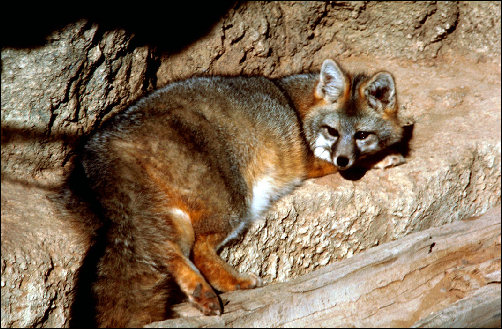

The human mind seems to delight in seeing things in terms of yes or no, black or white, either-or. Lack of certainty drives us up the proverbial wall. This certainly is one reason that science isn't popular with many, for certainty often is replaced by greater or lesser likelihood.
Take the seemingly simple task in biology of deciding what a species
is. Now, virtually everyone will agree that an elephant is a different species than a
rattlesnake, but it's not always that easy. Our desert Kit Fox was long recognized
as a separate species from the plains-dwelling Swift Fox. But now, in the Carlsbad
region, there is evidence of interbreeding. Free interbreeding is the criterion used to
recognize members of the same species. Thus, if there is extensive interchange of
genes, the Kit Fox and the Swift Fox are one species. But how much gene interchange is
allowable? That's a judgment call, not a sharp line, for as a species is evolving
into two separate species, it's seldom clear when the magical line of no return has
been passed.

Contributor: Arthur H. Harris, Laboratory for Environmental Biology, Centennial Museum, University of Texas at El Paso.
Desert Diary is a joint production of the Centennial Museum and KTEP National Public Radio at the University of Texas at El Paso.

Gray Fox (Urocyon cinereoargenteus), New Mexico. Photograph by Gary M. Stolz, courtesy of U.S. Fish and Wildlife Service. Clearly a different speciesd.
Coyne, J. A., and H. A. Orr. 2004. Speciation. Sinauer Associates, Inc., Sunderland, MD. 543 pp.